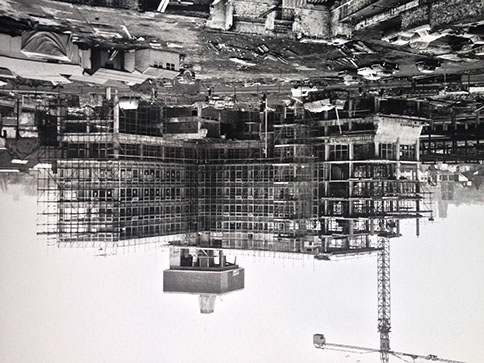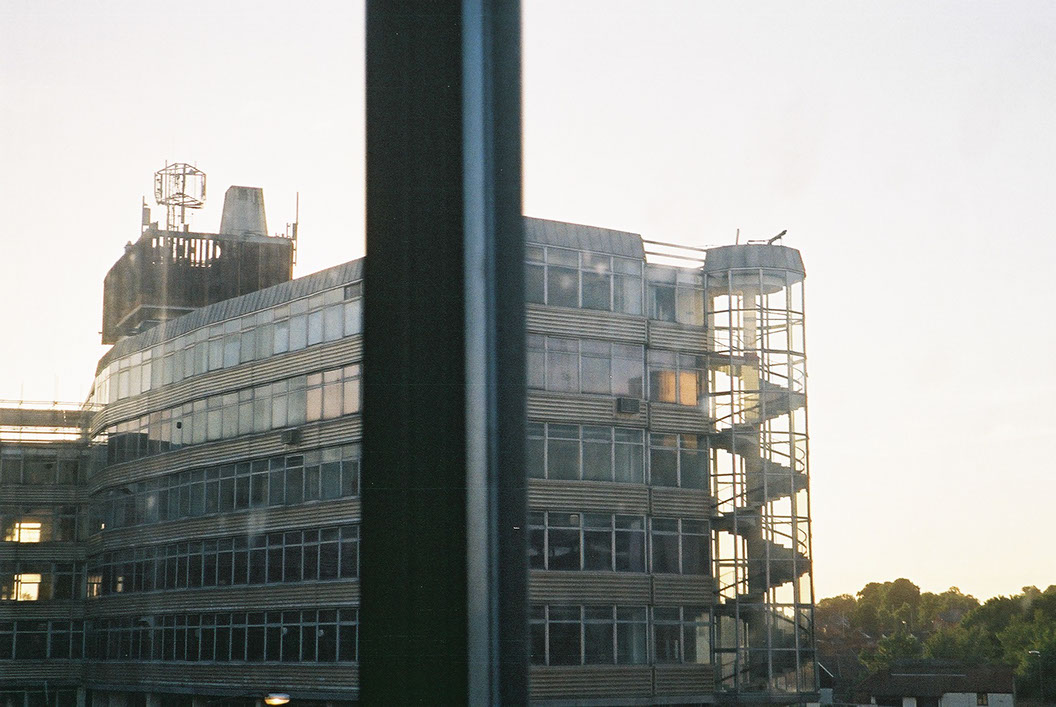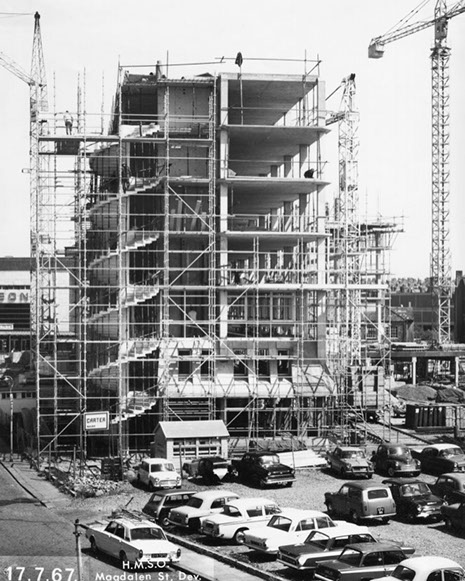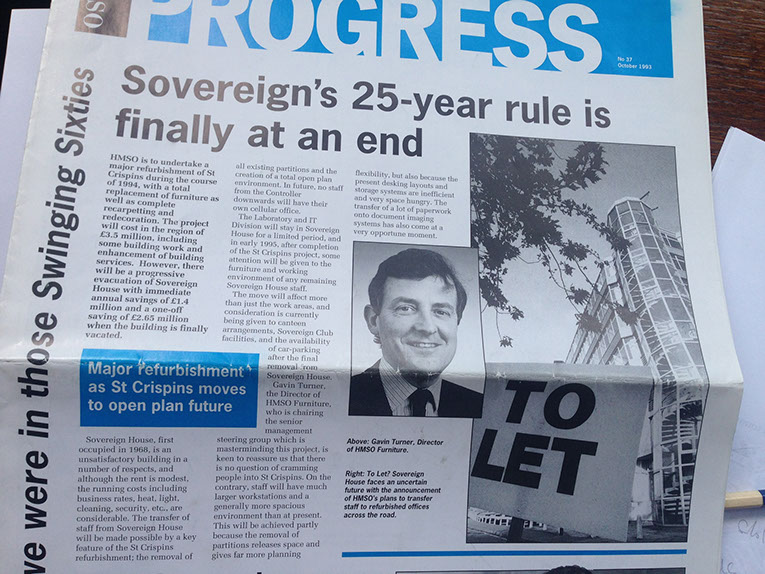Sovereign House is the long abandoned brutalist building of Her Majesty’s Stationary Office in Norwich, UK. The builders of the complex dreamt about a utopian workers community but the building soon became desolated.
Due to its derelict state, it is not even possible to approach the building, but since it is listed as a heritage, it keeps on standing as a monument. Most residents of Norwich have some memories around the building’s early days.
The project includes dissected bits of the building; archive material, built scale models, videos and a publication showing the glorious -but never happened- future and the actual state of Sovereign House.
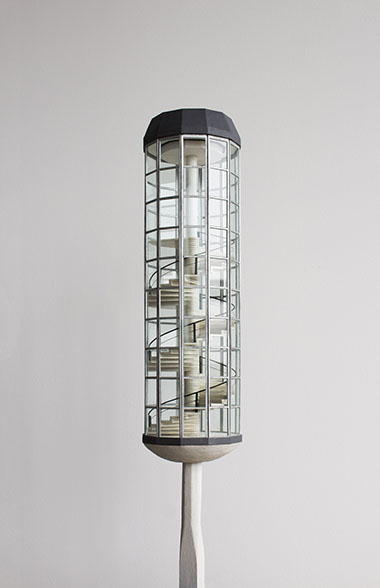
I enter the building and run up to the second floor, straight to my desk.
The glass staircase has an entrance there. It is just standing on its thin column, relentlessly, every day. It is clean; even its windows are clean. It would have twelve sides; if it were complete it would have ten rows of windows. Sometimes after work, I sit in Anglia Square and count these things.
A few days ago I wanted to go up to the third floor. I realized that my only way to escape the vigilance of the rest of the office is to use the staircase. No one sees me if I pass through there.
State of Limbo
Extracts of Sovereign House
While I am passing undetected to the other floors, I gaze at the square. On Anglia Square there are always people wandering. They look up at me and I wave back to them. I do not know what they are doing in the middle of the day there; they should be elsewhere working. They know what I am doing. I am at work.


A brick structure with a concrete sculpture inside looks down on the city from the top of a grand example concrete architecture.
It has no function, yet it is the spot you can admire from the rest of the town.
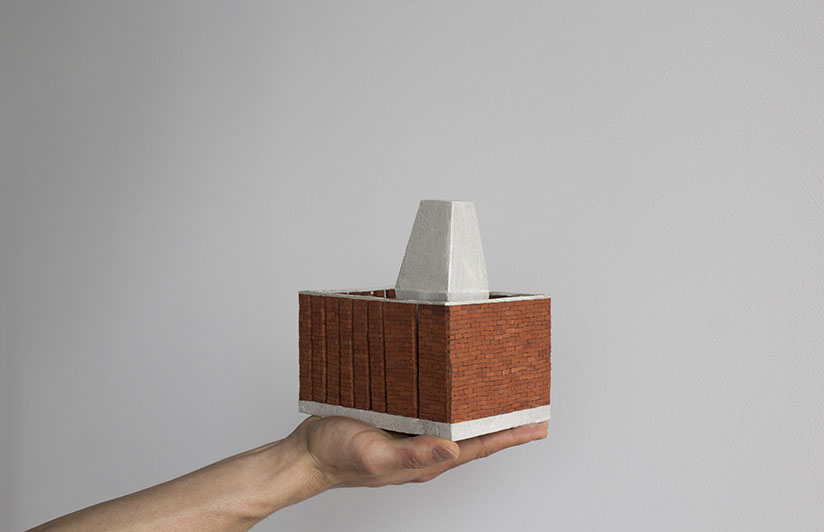
Its material does not communicate with the rest of the building; it reminds us of architecture understood in a traditional way and perhaps of what has been in its place before. Its materiality is the only common ground of understanding between what this place represents and what it eliminates.
Here, functionless structures begin to become the building itself.
